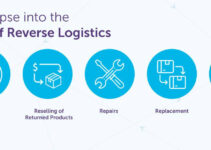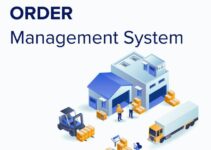Nestle is a food and drink processing Swiss multinational conglomerate. Henri Nestle founded the food and drink company in 1866. Today, we’ll discuss the supply chain analysis of Nestle; it focuses on various SCM elements like procurement planning, inventory management, warehousing, automation, transportation, and distribution.
Supply Chain Analysis of Nestle
Let’s discuss the main elements of the supply chain analysis of Nestle are as follows;
Procurement
Procurement is one of the key areas of Nestle and it helps the company to achieve sustainable growth and development. The procuring professionals of the brand make sure to perform responsible sourcing of raw materials, indirect materials, packaging, and supplies and add value to the company. However, they procure materials and supplies from various regions and countries across the world; their procuring hubs are in Malaysia, Panama, Switzerland, and others.
Suppliers Network
Nestle has established a very large suppliers, vendors, farmers, producers, and manufacturers network in various countries. The food brand has built very good and professional relationships with suppliers to ensure the smooth availability of raw supplies, materials, parts, components, products, and goods on time without any delays and disruptions.
Worldwide Network
Nestle is operating its business in approximately 190 countries across the globe. The food and drink processing brand has a very large network of retailers, distributors, manufacturers, and wholesalers. However, the brand employs the multidisciplinary strategic approach of supply chain management to manage the large complicated network. It comprises integration, strategic planning, and quality control in various geographical boundaries.
Every stage and step of the supply chain management process plays a key role from sourcing material and supplies from the farmers and producers and delivering finished goods to the end consumers. It makes sure the effectiveness of product safety, maintaining quality, and following the rules and standards.
Production and Manufacturing
Nestle employs various production and manufacturing methods and processes and their focus is on quality standards, innovation, and originality. It comprises optimizing production and manufacturing facilities, employing the latest technology to amplify efficiency and flexibility by employing the lean and agile production manufacturing strategic approach. As a result, the lean production methods help the food and drink processing brand to amplify uptime, decrease cost, limit waste, and manage overall quality control.
Distribution and Logistics
Nestle employs various transportation and 3rdparty logistics service providers for the transportation and distribution of products and goods. Using multiple channels would help the company to ensure the cost, timing, and quality of delivering products and goods in various markets and countries across the globe.
The logistics and distribution unit of Nestle would focus on managing the distribution system, warehousing, and transportation to amplify the customer satisfaction level by decreasing quality time and improving quality. However, the company puts a great emphasis on employing the latest technology, performing data analysis, and collaborating with various logistics partners to amplify efficiency and quality operations.
Inventory and Demand Forecasting
Nestle collaborates and coordinates with its technological department, commercial team, customers, and stakeholders to ensure efficient demand forecasting. Efficient demand forecasting would help the company maintain a balanced inventory and production level to avoid a shortage of products. Over-stocking increases the inventory carrying cost and other warehousing expenses.
Responsible Sourcing
Nestle has set up a strict code of conduct for suppliers and vendors to ensure responsible sourcing and ethical practices. The company makes sure that they’re complying with ethical practices, environmental regulations, human rights standards, and other quality and safe working conditions and requirements.
Warehouses
Nestle has a very large network of warehouses and distribution centers in various countries. The company has built them in the precise strategic locations nearing to the retail customers market. It helps the company to decrease the transportation cost and delivery time. However, the company employs to automation technology in warehouse management to ensure the right allocation of stock at the right location; it timely and efficiently delivers them to the end consumers without any delays and disruptions.
Corporate Social Responsibility and Sustainability
Nestle has made a strong commitment to social responsibility, environmental sustainability, and making the right and efficient decisions about sustainable supply chain networks. Some of the main elements of the sustainable and responsible supply chain of Nestle are; ethical sourcing, supporting farmers and non-exploitation of Indigenous farmers; JIT (just-in-time) inventory management to avoid over-stocking of resources.
However, the food and drink brand employs an integrated sustainable supply chain network to ensure transparency and visibility across the supply chain network. It helps decrease the wastage of resources, supports community programs, promotes environmental sustainability campaigns, and offers social and economic well-being to all.
Conclusion: Nestle Supply Chain Analysis | Nestle Supply Chain Management
After an in-depth study of the supply chain analysis of Nestle; we have realized that Nestle is the world’s leading food and drink processing brand. If you are learning about the Nestle supply chain analysis; then you should keep in mind the abovementioned SCM elements; procurement, planning, transportation, automation, inventory management, and sortation.
Ahsan is an accomplished researcher and has a deep insight in worldly life affairs. He goes Live 3 days a week on various social media platforms. Other than research writing, he’s a very interesting person.


